Chrysler 2008 Annual Report Download - page 121
Download and view the complete annual report
Please find page 121 of the 2008 Chrysler annual report below. You can navigate through the pages in the report by either clicking on the pages listed below, or by using the keyword search tool below to find specific information within the annual report.-
 1
1 -
 2
2 -
 3
3 -
 4
4 -
 5
5 -
 6
6 -
 7
7 -
 8
8 -
 9
9 -
 10
10 -
 11
11 -
 12
12 -
 13
13 -
 14
14 -
 15
15 -
 16
16 -
 17
17 -
 18
18 -
 19
19 -
 20
20 -
 21
21 -
 22
22 -
 23
23 -
 24
24 -
 25
25 -
 26
26 -
 27
27 -
 28
28 -
 29
29 -
 30
30 -
 31
31 -
 32
32 -
 33
33 -
 34
34 -
 35
35 -
 36
36 -
 37
37 -
 38
38 -
 39
39 -
 40
40 -
 41
41 -
 42
42 -
 43
43 -
 44
44 -
 45
45 -
 46
46 -
 47
47 -
 48
48 -
 49
49 -
 50
50 -
 51
51 -
 52
52 -
 53
53 -
 54
54 -
 55
55 -
 56
56 -
 57
57 -
 58
58 -
 59
59 -
 60
60 -
 61
61 -
 62
62 -
 63
63 -
 64
64 -
 65
65 -
 66
66 -
 67
67 -
 68
68 -
 69
69 -
 70
70 -
 71
71 -
 72
72 -
 73
73 -
 74
74 -
 75
75 -
 76
76 -
 77
77 -
 78
78 -
 79
79 -
 80
80 -
 81
81 -
 82
82 -
 83
83 -
 84
84 -
 85
85 -
 86
86 -
 87
87 -
 88
88 -
 89
89 -
 90
90 -
 91
91 -
 92
92 -
 93
93 -
 94
94 -
 95
95 -
 96
96 -
 97
97 -
 98
98 -
 99
99 -
 100
100 -
 101
101 -
 102
102 -
 103
103 -
 104
104 -
 105
105 -
 106
106 -
 107
107 -
 108
108 -
 109
109 -
 110
110 -
 111
111 -
 112
112 -
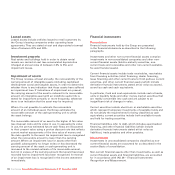 113
113 -
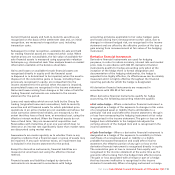 114
114 -
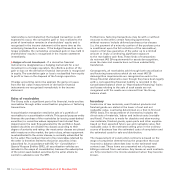 115
115 -
 116
116 -
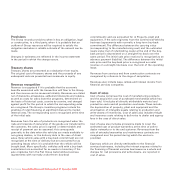 117
117 -
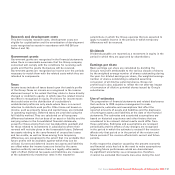 118
118 -
 119
119 -
 120
120 -
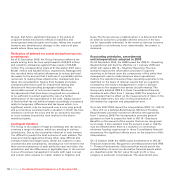 121
121 -
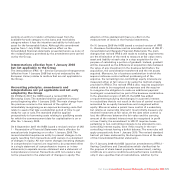 122
122 -
 123
123 -
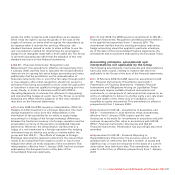 124
124 -
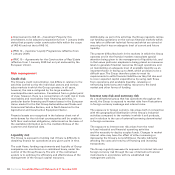 125
125 -
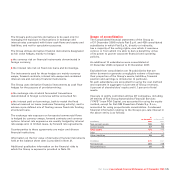 126
126 -
 127
127 -
 128
128 -
 129
129 -
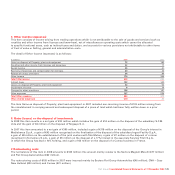 130
130 -
 131
131 -
 132
132 -
 133
133 -
 134
134 -
 135
135 -
 136
136 -
 137
137 -
 138
138 -
 139
139 -
 140
140 -
 141
141 -
 142
142 -
 143
143 -
 144
144 -
 145
145 -
 146
146 -
 147
147 -
 148
148 -
 149
149 -
 150
150 -
 151
151 -
 152
152 -
 153
153 -
 154
154 -
 155
155 -
 156
156 -
 157
157 -
 158
158 -
 159
159 -
 160
160 -
 161
161 -
 162
162 -
 163
163 -
 164
164 -
 165
165 -
 166
166 -
 167
167 -
 168
168 -
 169
169 -
 170
170 -
 171
171 -
 172
172 -
 173
173 -
 174
174 -
 175
175 -
 176
176 -
 177
177 -
 178
178 -
 179
179 -
 180
180 -
 181
181 -
 182
182 -
 183
183 -
 184
184 -
 185
185 -
 186
186 -
 187
187 -
 188
188 -
 189
189 -
 190
190 -
 191
191 -
 192
192 -
 193
193 -
 194
194 -
 195
195 -
 196
196 -
 197
197 -
 198
198 -
 199
199 -
 200
200 -
 201
201 -
 202
202 -
 203
203 -
 204
204 -
 205
205 -
 206
206 -
 207
207 -
 208
208 -
 209
209 -
 210
210 -
 211
211 -
 212
212 -
 213
213 -
 214
214 -
 215
215 -
 216
216 -
 217
217 -
 218
218 -
 219
219 -
 220
220 -
 221
221 -
 222
222 -
 223
223 -
 224
224 -
 225
225 -
 226
226 -
 227
227 -
 228
228 -
 229
229 -
 230
230 -
 231
231 -
 232
232 -
 233
233 -
 234
234 -
 235
235 -
 236
236 -
 237
237 -
 238
238 -
 239
239 -
 240
240 -
 241
241 -
 242
242 -
 243
243 -
 244
244 -
 245
245 -
 246
246 -
 247
247 -
 248
248 -
 249
249 -
 250
250 -
 251
251 -
 252
252 -
 253
253 -
 254
254 -
 255
255 -
 256
256 -
 257
257 -
 258
258 -
 259
259 -
 260
260 -
 261
261 -
 262
262 -
 263
263 -
 264
264 -
 265
265 -
 266
266 -
 267
267 -
 268
268 -
 269
269 -
 270
270 -
 271
271 -
 272
272 -
 273
273 -
 274
274 -
 275
275 -
 276
276 -
 277
277 -
 278
278 -
 279
279 -
 280
280 -
 281
281 -
 282
282 -
 283
283 -
 284
284 -
 285
285 -
 286
286 -
 287
287 -
 288
288 -
 289
289 -
 290
290 -
 291
291 -
 292
292 -
 293
293 -
 294
294 -
 295
295 -
 296
296 -
 297
297 -
 298
298 -
 299
299 -
 300
300 -
 301
301 -
 302
302 -
 303
303 -
 304
304 -
 305
305 -
 306
306 -
 307
307 -
 308
308 -
 309
309 -
 310
310 -
 311
311 -
 312
312 -
 313
313 -
 314
314 -
 315
315 -
 316
316 -
 317
317 -
 318
318 -
 319
319 -
 320
320 -
 321
321 -
 322
322 -
 323
323 -
 324
324 -
 325
325 -
 326
326 -
 327
327 -
 328
328 -
 329
329 -
 330
330 -
 331
331 -
 332
332 -
 333
333 -
 334
334 -
 335
335 -
 336
336 -
 337
337 -
 338
338 -
 339
339 -
 340
340 -
 341
341 -
 342
342 -
 343
343 -
 344
344 -
 345
345 -
 346
346 -
 347
347 -
 348
348 -
 349
349 -
 350
350 -
 351
351 -
 352
352 -
 353
353 -
 354
354 -
 355
355 -
 356
356
 |
 |
Fiat Group Consolidated Financial Statements at 31 December 2008120
though, that future significant changes in the yields of
corporate bonds may lead to effects on liabilities and
unrecognised actuarial gains and losses, taking into account
however any simultaneous changes in the returns of plan
assets where these may exist.
Realisation of deferred tax assets arising from tax loss
carryforwards
As of 31 December 2008, the Group had gross deferred tax
assets arising from tax loss carryforwards of €3,679 million
and valuation allowances against these assets of €2,448
million. The corresponding totals at 31 December 2007 were
€4,431 million and €3,234 million, respectively. Management
has recorded these valuation allowances to reduce deferred
tax assets to the amount that it believes it is probable will be
recovered. In making these adjustments, management has
taken into consideration figures from budgets and plans
consistent with those used for impairment testing and
discussed in the preceding paragraph relating to the
recoverable amount of non-current assets. Moreover,
the adjustments that have been recognised are considered
to be sufficient to protect against the risk of a further
deterioration of the assumptions in the plan, taking account
of the fact that the net deferred assets accordingly recognised
relate to temporary differences and tax losses which, to a
significant extent, may be recovered over a very long period,
and are therefore consistent with a situation in which the time
needed to exit from the crisis and for an economic recovery
to occur extends beyond the term implicit in the above-
mentioned plans.
Contingent liabilities
The Group is the subject of legal proceedings and tax issues
covering a range of matters, which are pending in various
jurisdictions. Due to the uncertainty inherent in such matters,
it is difficult to predict the final outcome of such matters. The
cases and claims against the Group often raise difficult and
complex factual and legal issues, which are subject to many
uncertainties and complexities, including but not limited to the
facts and circumstances of each particular case and claim, the
jurisdiction and the differences in applicable law. In the normal
course of business management consults with legal counsel
and certain other experts on matter related to litigation and
taxes. The Group accrues a liability when it is determined that
an adverse outcome is probable and the amount of the loss
can be reasonably estimated. In the event an adverse outcome
is possible or an estimate is not determinable, the matter is
disclosed.
Accounting principles, amendments
and interpretations adopted in 2008
On 30 November 2006, the IASB issued the IFRS 8 –
Operating
Segments
that will become effective on 1 January 2009 and
which will replace IAS 14 –
Segment Reporting
. The new
standard requires the information provided in segment
reporting to be based upon the components of the entity that
management uses to make decisions about operational
matters. The standard requires these operating segments to be
identified on the basis of internal reports that are regularly
reviewed by the entity’s management in order to allocate
resources to the segment and assess its performance. The
Group early adopted IFRS 8 in these Consolidated financial
statements with effect from 1 January 2008. The adoption of
this standard had no effect on the measurement of items in the
financial statements, but only on the presentation of
information by segment and geographical area.
On 5 July 2007 IFRIC issued the interpretation IFRIC 14 – IAS 19
–
The Limit on a Defined Benefit Asset, Minimum Funding
Requirements and their Interaction
effective retrospectively
from 1 January 2008. The interpretation provides general
guidance on how to assess the limit in IAS 19 -
Employee
Benefits
on the amount of the surplus that can be recognised
as an asset. It also explains how the pension asset or liability
may be affected when there is a statutory or contractual
minimum funding requirement in these Consolidated financial
statements. No significant effects arose on the adoption of this
interpretation.
On 13 October 2008, the IASB issued amendments to IAS 39 -
Financial Instruments: Recognition and Measurement
and IFRS
7 -
Financial Instruments: Disclosures
that would permit the
reclassification of some non-derivative financial assets which
are classified under the fair value through profit or loss
category in particular circumstances. The amendment also
